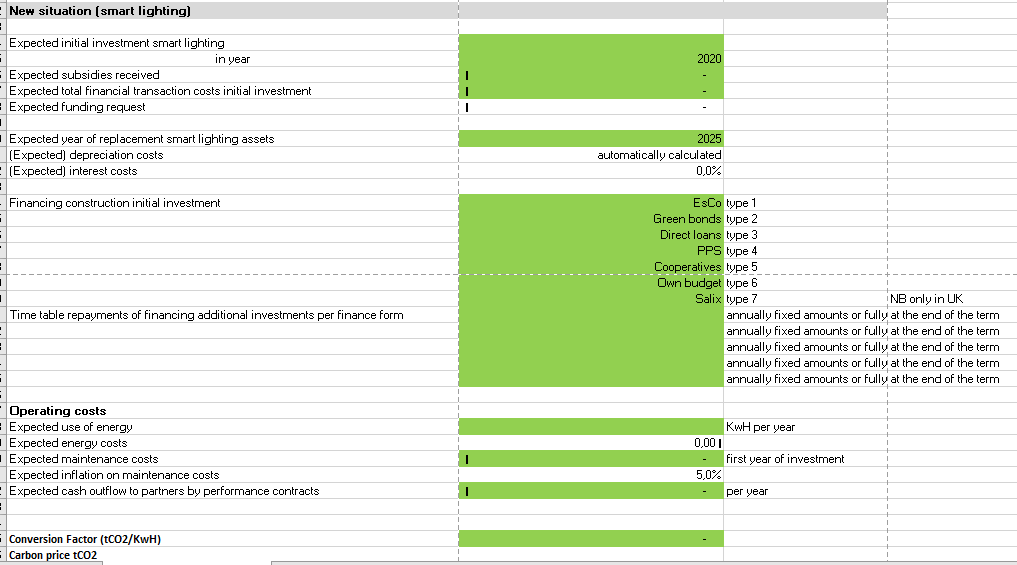Finance
A crucial element in implementing low-carbon public lighting (PL) technologies is the availability of financial means to invest in sustainable PL-technologies and systems and to calculate the maintenance costs during the runtime of the investment. In close co-operation between the financial researchers and all other pilot partners different methods of funding and investment are being examined, described and discussed.

Finance models
Since 2018 the finance research team have done research into different financing models:
- Energy Performance Contracting (EPC) and Energy Services Company (ESCo);
- Green Bonds;
- Loans either from banks or special vehicle financial institutions;
- Public Private Partnerships – joint financing private sector and public sector;
- Cooperatives;
- Funding from own budget;
- Salix model, only applicable in UK and included on the request from pilot partner Suffolk;
The research focuses on assigning one of the 7 models and examining if and how this specific model is applicable in their local context. It is important to note that the public sector has a different capital funding structure to the private sector and operates under different policies, laws and governance arrangements. There are also large differences within countries, although all the pilots are European.

Calculation model
Before making the investment local governments need to make a calculation if the switch to smart lighting is worth it. The pay back period depends on many variables, such as interest rate, energy prices, energy savings, savings in maintenance and depreciation. The finance research team has developed an easy to use excel sheet with which the different pilots can assess their pay back period. At the same time it is also possible to calculate the carbon savings based on the reduction in energy use, depending on the source of energy.
With the knowledge that in the future a carbon tax will be introduced, the local governments can also calculate their future carbon tax savings. The European Emmission Trading Scheme for carbon limits emissions from more than 11,000 heavy energy-using installations (power stations and industrial plants) and airlines operating between these countries.

